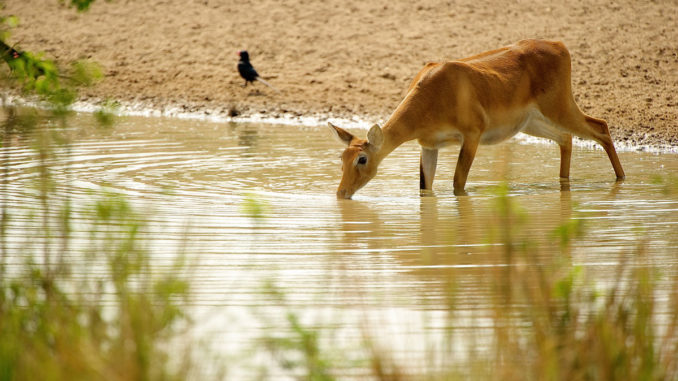
Future of local herds depends on button bucks
Even though the deer season has arrived in one form or another, the majority of deer slayers begin to ramp up their efforts in October. Cooler weather sets in this month, making it comfortable for all hunters to sit motionless, perched in a tree stand or well hidden in a ground blind. For some hunters, a buck big enough to be eligible for a $500 taxidermy investment is about the only animal worthy of a lead projectile. But for the rest of the deer-hunting community, meat in the freezer reigns supreme.
Of course, shooting a trophy buck would be an awesome achievement for any hunter, from experienced sportsmen to first-timers. On the other hand, a doe for the dinner table is always a good way to break the ice at the beginning of the season.
However, there are potential follies associated with honing in on a slick-head. In a group of smallish does, the biggest deer often winds up being a buck fawn, aka, a button buck. And hunters often select them as the mature doe of the group and squeeze the trigger.
Harvesting a buck fawn while trying to harvest a doe is not a good way to prepare for the future. A premature overharvest of young bucks is an effective way to disrupt the age dynamics and cripple the potential buck availability in upcoming seasons.
Eventually, every hunter will make the mistake of pulling the trigger, mistaking a young buck for a mature doe. And it happens much more than most hunters realize. In North Carolina, the button buck harvest makes up about 5 percent of the total harvest, or around 14,000 animals annually. While most hunters only take one button buck per season, strikingly, there are 50 to 100 hunters who kill two or three button bucks every fall. There’s no reason to think that the percentages will be different in South Carolina, which extrapolates out to about 10,000 buck fawns being killed statewide every season.
Most buck fawns are likely killed while being run by dogs or shot under low-light conditions from a hunter in a tree stand. To begin with, buck fawns will often be quite heavier than doe fawns of similar age, especially if they are born early in the season. Additionally, buck fawns are the least anxious or the most naïve of all deer. Hunters can always expect the first deer in the peanut field or clover plot to be a buck fawn. And when other deer are hesitantly waiting in the protection of the woods, the buck fawns are getting their bellies full with the cream of the crop.
Hunters can reduce the harvest of buck fawns by following a few guidelines. First, hunters should spend adequate time studying deer behavior. The first deer into the field is almost always a button buck. When a group of deer enters a clearing, the older, mature does will generally be the last to enter. If three deer walk into view and the first two deer are small and the last one larger; the old doe is generally the last one, with the first two deer usually being the fawns. But if the first of the three deer is large and the second two are small, the first one is usually a buck fawn. The adult doe may be still in the woods, or the button buck may be orphaned and traveling with another family group.
Last, hunters can invest in high-quality optics, including a pair of ultra-sharp binoculars. A good scope for rifle hunters is handy, but high-quality binoculars are required equipment for today’s deer hunter. Binocular vision is crucial for studying deer on the hoof, and high-quality glass is needed to insure that button bucks are protected from inadvertent harvests.




Be the first to comment